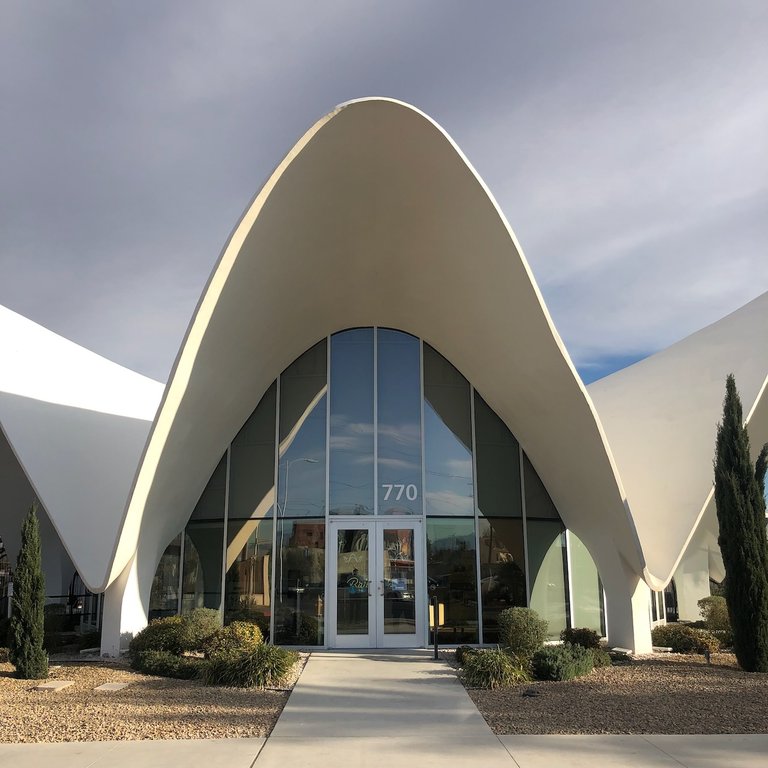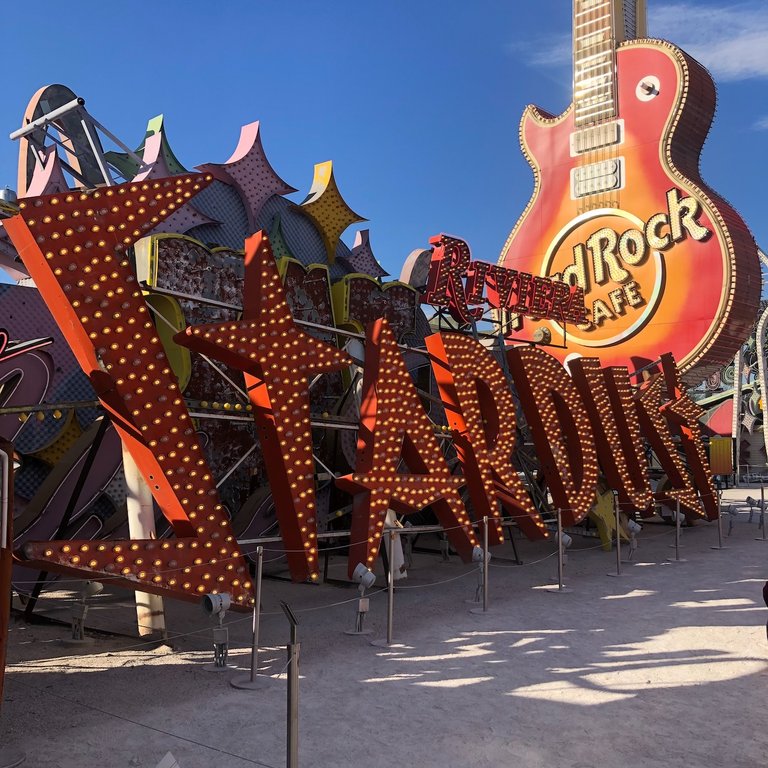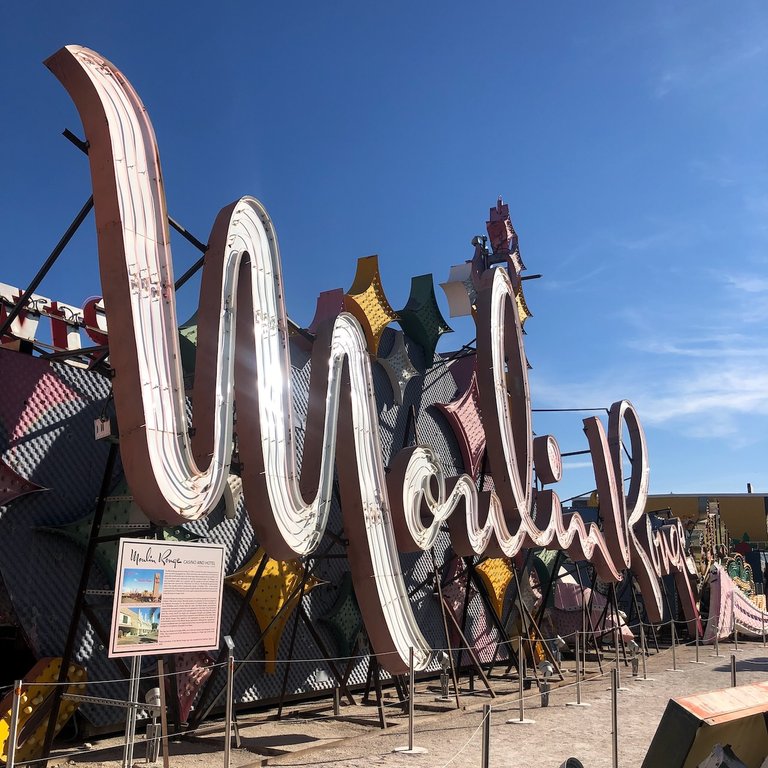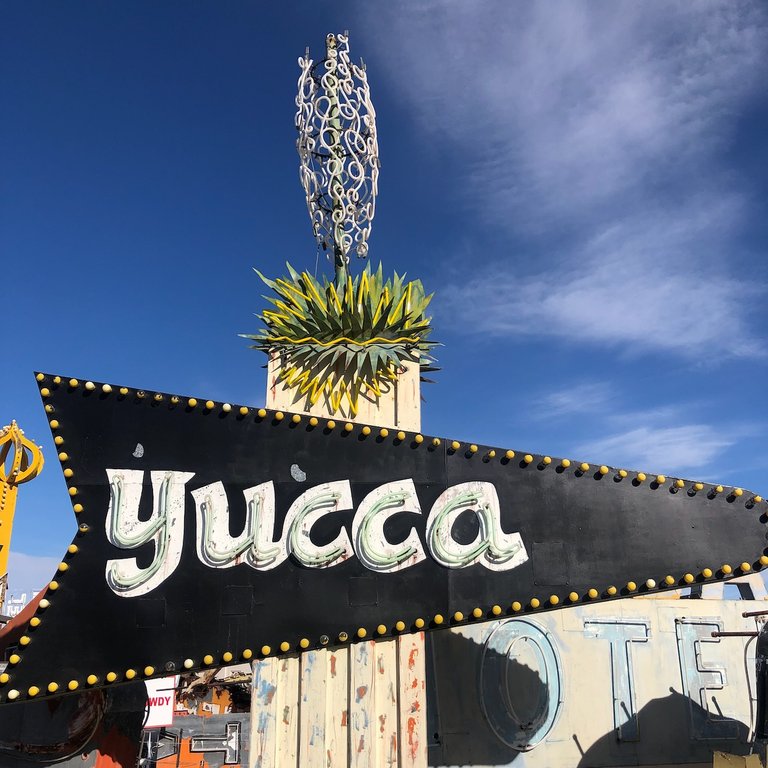Las Vegas is not a city that lives in the past1, especially architecturally. When someone has a big idea with big financing and something less than shiny and new occupies a golden location, they have no qualms about knocking down old landmarks and building bigger and brighter ones. For those embracing a touch more nostalgia, there is, happily, the Neon Museum.
The Neon Museum, as the name implies, is a repository of defunct neon signs that were salvaged from past icons of the city's glittering history. Some are restored and still lit at night. Some are awaiting rehabilitation to their former glory. The former are showcased along a curated walking path in the main outdoor exhibit space. The latter are stored en masse in the "boneyard."
As neon signs are visual elements, this will be, primarlily, a pictorial post, with several favorite or meaningful examples, annotated as appropriate.
The museum's lobby is housed in the building, transported from its original location, that served as the reception lobby for the La Concha motel. Designed by American architect Paul R. Williams for its 1961 opening, the distinctive shape is evident in both the Neon Museum sign (see the cover image for this post) and the neon sign that used to adorn the hotel itself. Kim is standing in front of the sign because this is where she stayed on her very first trip to Las Vegas.
The museum lobby. A very distinctive design.

Kim slept here!

Speaking of firsts, on my first visit to Las Vegas (this was after I met Kim), we stayed at the Stardust.

The Moulin Rouge is a hotel of more than just glamourous significance. Opening in May of 1955, it was the first major integrated casino in the still segregated city. Popular among black entertainers and gamblers, who were not allowed to eat or gamble at Downtown or Strip casinos, it also found favor with people of all races. It was famous for its "third show" at 2:30 a.m., to which headliners from the big name casinos would often come after their own sets. The sign was designed by Betty Willis, also known for her iconic Welcome to Fabulous Las Vegas Nevada sign.

Next is a sentimental entry – the Liberace Museum. My family background is Polish and Liberace was a favorite of my maternal grandmother. I still have a few of her Liberace records and, yes, I still listen to them! The museum, which opened in 1979, closed, sadly, in 2010. I never had the opportunity to visit.

Lastly, we have two lesser known properties of which I was previously unaware. Nonetheless, I liked the designs so I'm including them here. Through my recent travels to the American Southwest, I've developed an appreciation for the flora of the region, and I have, for years, been a martini man (gin, straight up, extremely dry, with a twist).
Yucca ...

... and martinis

1As always, there are, of course, exceptions. I covered one in my last post on the Mormon Fort, and will be covering another in a future post.